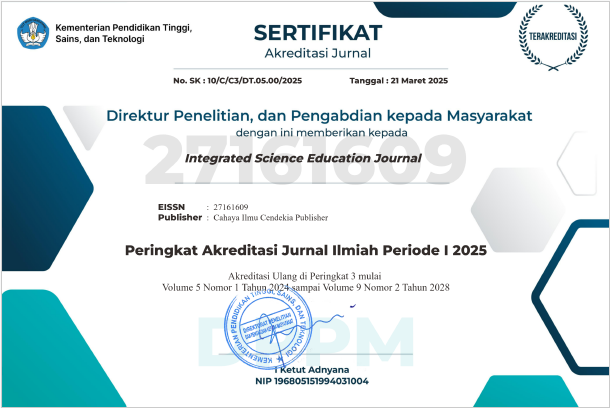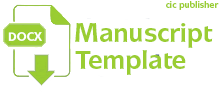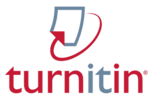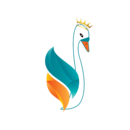Unveiling STEM Education Conceptions: Insights from Pre-Service Mathematics and Science Teachers
Abstract
Purpose of the study: This study aims to analyze STEM education conceptions among pre-service mathematics and science teachers, focusing on their perceptions, understanding, and readiness to implement STEM education. The research seeks to identify gaps in STEM comprehension to inform teacher preparation program development.
Methodology: This descriptive quantitative study describes the STEM concept among prospective science and mathematics teachers using an online questionnaire with Likert scale and open-ended questions. Data were analyzed using descriptive statistics, such as mean and standard deviation, and validated with Gregory's content validity formula, and Cronbach's alpha.
Main Findings: Main findings indicate that 14.58% of respondents demonstrated very high STEM conception with scores exceeding 112.37, while 31.25% exhibited high conception within the range of 98.83 to 112.37. Conversely, 41.67% showed low conception with scores between 85.33 and 98.82, and 12.50% had very low conception, scoring below 85.33. Overall, only 45.83% of pre service teachers possessed adequate STEM conception, highlighting that 54.17% require strengthening in their understanding of STEM. Mathematics is seen as an essential foundational element in STEM education, with technology integration being key to improving learning outcomes. This study highlights the need for curriculum revision and professional development to improve STEM readiness among preservice teachers.
Novelty/Originality of this study: This study identified a lack of STEM concepts among preservice mathematics and science teachers, and highlighted the urgency of revising the curriculum with an interdisciplinary approach that connects theory and practice. Limitations include self-reported data and a limited focus, so a larger study is needed.
References
A. L. Townley, “Teaching and learning science in the 21st century: Challenging critical assumptions in post-secondary science,” Education Sciences, vol. 8, no. 1, p. 12, 2018.
R. Idris and J. Bacotang, “Exploring STEM education trends in Malaysia: Building a talent pool for Industrial revolution 4.0 and society 5.0,” International Journal of Academic Research in Progressive Education and Development, vol. 12, no. 2, pp. 381–393, 2023.
T. Sekiyama, “The impact of the fourth industrial revolution on student mobility from the perspective of education economics,” Creative Education, vol. 11, no. 04, p. 435, 2020.
M. Makgato, “STEM for sustainable skills for the Fourth Industrial Revolution: Snapshot at some TVET colleges in South Africa,” Theorizing STEM education in the 21st century, 2019.
L. Nahar, “The Effects of Standardized Tests on Incorporating 21st Century Skills in Science Classrooms,” Integrated Science Education Journal, vol. 4, no. 2, 2023, doi: 10.37251/isej.v4i2.324.
H. M. Fadzil, R. M. Saat, K. Awang, and D. S. H. Adli, “Students’ Perception of Learning STEM-Related Subjects through Scientist-Teacher-Student Partnership (STSP).,” Journal of Baltic Science Education, vol. 18, no. 4, pp. 537–548, 2019.
N. C. Siregar, R. Rosli, and S. Nite, “Students’ interest in Science, Technology, Engineering, and Mathematics (STEM) based on parental education and gender factors,” International Electronic Journal of Mathematics Education, vol. 18, no. 2, p. em0736, 2023.
A. Abdurrahman, “Developing STEM Learning Makerspace for Fostering Student’s 21st Century Skills in The Fourth Industrial Revolution Era,” in Journal of Physics: Conference Series, IOP Publishing, 2019, pp. 1–6, 2024.
R. Birzina and T. Pigozne, “Technology as a tool in STEM teaching and learning,” in The Proceedings of the International Scientific Conference Rural Environment. Education. Personality (REEP), 2020, pp. 219–227, 2024.
J. Naidoo and A. Singh-Pillay, “Teachers’ Perceptions of Using the Blended Learning Approach for STEM-Related Subjects within the Fourth Industrial Revolution.,” Journal of Baltic Science Education, vol. 19, no. 4, pp. 583–593, 2020.
K. C. Margot and T. Kettler, “Teachers’ perception of STEM integration and education: a systematic literature review,” IJ STEM Ed, vol. 6, no. 1, pp. 2, 2019, doi: 10.1186/s40594-018-0151-2.
T. Valtonen, E. Sointu, J. Kukkonen, S. Kontkanen, M. C. Lambert, and K. Mäkitalo-Siegl, “TPACK updated to measure pre-service teachers’ twenty-first century skills,” Australasian Journal of Educational Technology, vol. 33, no. 3, 2017.
M. Barak, “Closing the Gap Between Attitudes and Perceptions About ICT-Enhanced Learning Among Pre-service STEM Teachers,” J Sci Educ Technol, vol. 23, no. 1, pp. 1–14, 2014, doi: 10.1007/s10956-013-9446-8.
G. Gay and K. Kirkland, “Developing Cultural Critical Consciousness and Self-Reflection in Preservice Teacher Education,” Theory Into Practice, vol. 42, no. 3, pp. 181–187, 2003, doi: 10.1207/s15430421tip4203_3.
C. Murphy et al., “STEM Education curriculum & literature overview and primary science Education systematic literature review,” 2025. https://doras.dcu.ie/29064/
D. Z. Atibuni, D. Manyiraho, and A. N. Nabitula, “A Fourth Industrial Revolution Paradigm Shift in Teacher Education?,” International Journal of African Higher Education, vol. 9, no. 2, pp. 1–21, 2022.
Z. H. Putra, D. Rahmadhani, E. Noviana, and N. Hermita, “Prospective elementary teachers’ attitude toward technology-based mathematics assessment,” in Journal of Physics: Conference Series, IOP Publishing, 2022, p. 012007, 2024.
N. T. T. Khuyen, “Impacts of Method Courses on Vietnamese Pre-Service Teachers’ Perceptions and Practices: From the Perspectives of Model and Modeling in STEM Education,” Journal of Physics Conference Series, vol. 2727, no. 1, p. 012001, 2024, doi: 10.1088/1742-6596/2727/1/012001.
Y. Lian, K.-K. Tsang, and Y. Zhang, “The Construction and Sustainability of Teachers’ Positive Emotions toward STEM Educational Work,” Sustainability, vol. 13, no. 11, 2021, doi: 10.3390/su13115769.
M. Amin and B. Mustaqim, “Vocational Teachers Readiness in Integration The Principles of Industrial Revolution 4.0 into The Learning Process,” Elinvo (Electronics, Informatics, and Vocational Education), vol. 6, no. 2, pp. 106–119, 2021.
D. Andrian, A. Wahyuni, and S. Ramadhan, “Mathematics Teachers’ Performance in the Industrial Revolution Era 4.0: A Structural Equation Model,” Journal of Innovation in Educational and Cultural Research, vol. 3, no. 4, pp. 554–563, 2022.
F. Kiraga, “Literature Review: Efforts To Improve Creative Thinking Ability In Science Learning,” Integrated Science Education Journal, vol. 4, no. 2, 2023, doi: 10.37251/isej.v4i2.330.
H. Çalisici and Ö. Ö. Sümen, “Metaphorical Perceptions of Prospective Teachers for STEM Education,” Universal Journal of Educational Research, vol. 6, no. 5, pp. 871–880, 2018.
G. Haciömeroğlu, “Sınıf Öğretmeni Adaylarının Fen, Teknoloji, Mühendislik ve Matematik (FeTeMM) Öğretimi Yönelim Düzeylerinin İncelenmesi,” International Online Journal of Educational Sciences, vol. 2018, pp. 1, 2018, doi: 10.15345/iojes.2018.01.014.
J. Li et al., “The Value of STEM Scholarship Grants to Undergraduate and Graduate Students Intending to Study the STEM Disciplines and Pursue STEM Careers,” in Preparing Teachers to Teach the STEM Disciplines in America’s Urban Schools, vol. 35, Emerald Publishing Limited, 2021, pp. 179–200. doi: 10.1108/S1479-368720210000035011.
E. A. AlMuraie, N. A. Algarni, and N. S. Alahmad, “Upper-Secondary School Science Teachers’ Perceptions of the Integrating Mechanisms and Importance of STEM Education,” Journal of Baltic Science Education, vol. 20, no. 4, pp. 546–557, 2021.
A. N. Kiazai, N. Siddiqua, and Z. Waheed, “Challenges in Implementing STEM Education and Role of Teacher Education Programs in Mitigating these Challenges,” International Journal of Distance Education and E-Learning, vol. 5, no. 2, 2020, doi: 10.36261/ijdeel.v5i2.1047.
S. Sugiyono, Metode Penelitian Pendidikan Pendekatan Kualitatif, Kuantitatif dan R & D [Educational Research Methods Qualitative, Quantitative and R & D Approaches], Alfabeta, Bandung, 2018.
S. Arikunto, Prosedur Penelitian Suatu Pendekatan Praktik [Research Procedures A Practical Approach]. Jakarta: Rineka Cipta, 2013.
J. W. Creswell, Research Design: Pendekatan Metode Kualitatif, Kuantitatif, Dan Campuran [Research design: qualitative, quantitative, and mixed methods approaches], Yogyakarta: Pustaka Pelajar, vol. 5, 2016.
S. A. Gregory, The design method. Springer, 2013.
S. Azwar, Penyusunan Skala Psikologi [Psychological Scale Development]. Yogyakarta: Pustaka Belajar, 2016.
P. J. Laksono and E. A. Patriot, “Promoting Environmental Awareness through Science Education: Indonesian Malay Educational Perspectives,” Proceedings of International Seminar on Social, Humanities, and Malay Islamic Civilization, vol. 10, no. 1, 2024.
Z. Zhan, W. Shen, Z. Xu, S. Niu, and G. You, “A bibliometric analysis of the global landscape on STEM education (2004-2021): towards global distribution, subject integration, and research trends,” Asia Pacific Journal of Innovation and Entrepreneurship, vol. 16, no. 2, pp. 171–203, 2022, doi: 10.1108/APJIE-08-2022-0090.
L. Qiu, F. Ikeda, and N. Yamashita, “Development and Validation of a Taxonomy for Specific Questions Based on Deficiencies in Logical Reasoning,” Integrated Science Education Journal, vol. 6, no. 1, 2025, doi: 10.37251/isej.v6i1.1102.
A. M. Novak, “Using technologies to support middle school students in building models of stream water quality,” in Proceedings of the 2017 Annual Meeting of the National Association for Research in Science Teaching (NARST), San Antonio, TX, USA, 2017, pp. 22–25.
E. C. Miller and J. S. Krajcik, “Promoting deep learning through project-based learning: a design problem,” Discip Interdscip Sci Educ Res, vol. 1, no. 1, p. 7, 2019, doi: 10.1186/s43031-019-0009-6.
Y. Zhang, M. A. Feijoo-Garcia, Y. Gu, V. Popescu, B. Benes, and A. J. Magana, “Virtual and Augmented Reality in Science, Technology, Engineering, and Mathematics (STEM) Education: An Umbrella Review,” Information, vol. 15, no. 9, 2024, doi: 10.3390/info15090515.
S. A. Cahayu, J. Siburian, and A. Hamidah, “The Effect of Problem Based Learning (PBL) model based on local wisdom to improve students’ critical thinking skills,” Integrated Science Education Journal, vol. 5, no. 2, 2024, doi: 10.37251/isej.v5i2.985.
M. Stohlmann, T. Moore, and G. Roehrig, “Considerations for teaching integrated STEM education,” Journal of Pre-College Engineering Education Research (J-PEER), vol. 2, no. 1, 2012, doi: 10.5703/1288284314653.
L. S. Nadelson, J. Callahan, P. Pyke, A. Hay, M. Dance, and J. Pfiester, “Teacher STEM perception and preparation: Inquiry-Based STEM professional development for elementary teachers,” The Journal of Educational Research, vol. 106, no. 2, pp. 157–168, 2013, doi: 10.1080/00220671.2012.667014.
C. Wang, J. Shen, and J. Chao, “Integrating Computational Thinking in STEM Education: A Literature Review,” Int J of Sci and Math Educ, vol. 20, no. 8, pp. 1949–1972, 2022, doi: 10.1007/s10763-021-10227-5.
J. A. Ejiwale, “Barriers to successful implementation of STEM education,” Journal of Education and Learning (EduLearn), vol. 7, no. 2, pp. 63–74, 2013.
T. R. Kelley and J. G. Knowles, “A conceptual framework for integrated STEM education,” International Journal of STEM education. Springer, 2016. doi: 10.1186/s40594-016-0046-z.
L. D. English, “Advancing elementary and middle school STEM education,” International Journal of Science and Mathematics Education, vol. 15, pp. 5-24, 2017, doi: 10.1007/s10763-017-9802-x.
D. L. Carlisle and G. C. Weaver, “STEM education centers: catalyzing the improvement of undergraduate STEM education,” IJ STEM Ed, vol. 5, no. 1, p. 47, 2018, doi: 10.1186/s40594-018-0143-2.
L. Darling-Hammond, Getting Teacher Evaluation Right: What Really Matters for Effectiveness and Improvement. Teachers College Press, 2015.
Y.-T. Wu and O. R. Anderson, “Technology-enhanced stem (science, technology, engineering, and mathematics) education,” J. Comput. Educ, vol. 2, no. 3, pp. 245–249, 2015, doi: 10.1007/s40692-015-0041-2.
T. J. Kennedy and M. R. L. Odell, “Engaging Students in STEM Education,” Science Education International, vol. 25, no. 3, pp. 246–258, 2014.
Copyright (c) 2025 Pandu Jati Laksono, Suhadi Suhadi, Arvin Efriani

This work is licensed under a Creative Commons Attribution 4.0 International License.
Authors who publish with this journal agree to the following terms:
- Authors retain copyright and acknowledge that the Integrated Science Education Journal is the first publisher licensed under a Creative Commons Attribution 4.0 International License.
- Authors are able to enter into separate, additional contractual arrangements for the non-exclusive distribution of the journal's published version of the work (e.g., post it to an institutional repository or publish it in a book), with an acknowledgment of its initial publication in this journal.
- Authors are permitted and encouraged to post their work online (e.g., in institutional repositories or on their website) prior to and during the submission process, as it can lead to productive exchanges and earlier and greater citation of published work.







.png)
.png)






